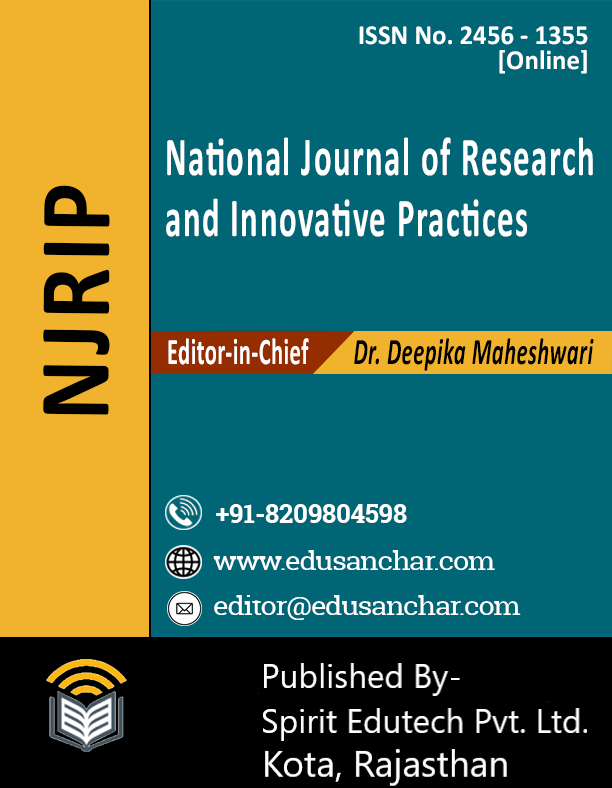
दिव्यांगों के अधिकार एक विस्तृत परिप्रेक्ष्य
Author Name :- Sandeep Kumar,,
Journal type:- NJRIP-National Journal of Research and Innovative Practices
Research Field Area :- Department of Education ; Volume 10, , No. of Pages: 14
Your Research Paper Id :- 2025010807
Download Published File :- Click here
Abstraction :-
Keywords :-
दिव्यांगों के अधिकार , गरिमा , सम्मान ,दृष्टिकोणों, WHO
References :-
• Ministry of Social Justice and Empowerment. (2016). The Rights of Persons with Disabilities Act, 2016.
• Singh, S. (2019). Disability rights in India: A critical analysis. Journal of Disability Studies, 5(1), 1-12.
• United Nations. (2006). Convention on the Rights of Persons with Disabilities.
• World Health Organization. (2011). World Report on Disability.
• Alves, M. (2018). Disability and human rights: A review of the literature. Journal of Human Rights, 17(2), 147-162.
• Barnes, C. (2018). Understanding disability: A sociological perspective. Routledge.
• Campbell, J. (2019). Disability and equality law: A review of the Equality Act 2010. Journal of Disability Studies, 5(2), 1-15.
• Chaturvedi, S. (2020). Disability rights in India: An analysis of the Rights of Persons with Disabilities Act, 2016. Journal of Indian Law, 10(1), 1-15.
• Davis, L. J. (2017). The disability studies reader. Routledge.
• Ghai, A. (2018). Disability and identity: A critical analysis. Journal of Disability Studies, 4(1), 1-12.
• Harris, J. (2019). Disability and human rights: A critical analysis. Journal of Human Rights, 18(1), 1-15.
• Kumar, R. (2019). Disability and education: A review of the literature. Journal of Educational Research, 12(1), 1-12.
• Linton, S. (2018). Claiming disability: Knowledge and identity. New York University Press.
• Mitra, S. (2018). Disability and poverty: A review of the literature. Journal of Poverty, 22(2), 147-162.
• Oliver, M. (2017). Understanding disability: From theory to practice. Macmillan.
• Shakespeare, T. (2018). Disability rights and wrongs revisited. Routledge.
• Stone, E. (2019). Disability and development: A review of the literature. Journal of Development Studies, 55(1), 1-15.
• Thomas, G. (2018). Disability and inclusion: A review of the literature. Journal of Inclusive Education, 12(1), 1-12.
• United Nations. (2018). Disability and the Sustainable Development Goals.
• Young, I. M. (2018). Justice and the politics of difference. Princeton University Press.


